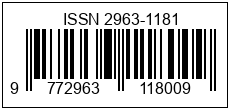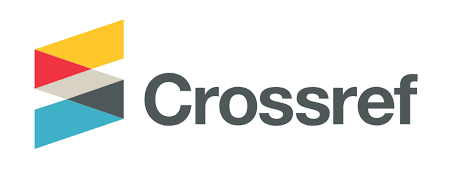IMPLEMENTASI SISTEM INFORMASI MANAJEMEN PENDIDIKAN DAN TENAGA KEPENDIDIKAN KEMENTRIAN AGAMA (SIMPATIKA): MENGGUNAKAN TAM MODEL
DOI:
https://doi.org/10.55681/economina.v1i2.71Keywords:
Perception of Ease of Use, Perception of Significance, Perception User Satisfaction, Implementation of SIMPATIKAAbstract
This study aims to determine: (1) The effect of Perceived Ease of Use on the application of SIMPATIKA in Madrasas throughout the Solok District; (2). The Influence of Perception of Utilization on the application of SIMPATIKA in Madrasas throughout the Solok District; (3) The Influence of User Satisfaction Perception on the application of SIMPATIKA in Madrasas throughout the Solok District; (4) The effect of Perception of Ease of Use, Perception of Use and Perception of User Satisfaction simultaneously on the application of SIMPATIKA. This research was conducted at Madrasas in Kab. Solok MI level. MTs and MA. The data used are primary data. In this study using the philosophy of positivism with the Associative approach. The results showed that: (1) Perception of Ease of use had no effect on the application of SIMPATIKA in Madrasas in the District of Solok; (2) Perception of Utilization does not affect the application of SIMPATIKA in Madrasas in the District of Solok (3) Perception of User Satisfaction influences the Application of SIMPATIKA in Madrasas in the District of Solok (4) Perception of Ease of Use, Perception of Usage and Perception of User Satisfaction simultaneously affect the application of SIMPATIKA in Madrasas throughout the District..
Downloads
References
Agustina, A. M. (2018). Pengaruh Persepsi Kegunaan, Persepsi Kemudahan dan Kepuasan Terhadap Penggunaan E-Filing Wajib Pajak (Studi Pada Pegawai Negeri Sipil di Lingkungan IAIN Surakarta).
Ardhiani, L. N. (2015). Analisis Faktor-Faktor Penerimaan Penggunaan Quipperschool.Com Dengan Menggunakan Pendekatan Technology Acceptance Model (Tam) Dan Theory of Planned Behavior (Tpb) Di SMA Negeri 7 Yogyakarta.
Alsoufi, A., & Ali, H. (2014). Customers’ Perception of M-B Anking Adoption I N K Ingdom O F B Ahrain : A N E Mpirical Assessment of A N E Xtended T Am Model. 6(1), 1–13.
Chri & Mat, (2011) Antecedents and Consequences of User Satisfaction with an e-Learning Portal International Journal of Digital Society (IJDS), 18 (2), 1-18
Eko Supatmi. (2016). Pengaruh pelatihan, kompensasi terhadap kepuasan kerja karyawan dan kinerja karyawan. 7(1), 25–37.
Fran, S & Pulasna, P (2016). Penerapan Technology Acceptance Model (TAM)
Pengujian Model Penerimaan Sistem Informasi Keuangan Daerah. 9(3), 196–209.
Fonchamnyo, D. C. (2013). Customers’ Perception of E-banking Adoption in Cameroon : An Empirical Assessment of an Extended TAM. 5(1), 166–176. https://doi.org/10.5539/ijef.v5n1p166
Fatly (2011) Perceived Usefulness, Perceived Ease of Use and user TAM of Information Techonology International Journal of Digital Society (IJDS), 20.(4) 1-23.
Ferda, A., & Corresponding, Ç. (2011). The Acceptance of Tax Office Automation System (VEDOP) By Employees : Factorial Validation of Turkish Adapted Technology Acceptance Model ( TAM ). 3(6), 107–116. https://doi.org/10.5539/ijef.v3n6p107
Gede, I. P., Trenida, T., & Dwirandra, A. A. N. B. (2018). Dukungan Manajemen Puncak Memoderasi Pengaruh Keterlibatan Pengguna dan Kemampuan Pengguna Pada Kinerja Sistem Informasi Akuntansi. 23, 1844–1869.
Ghozali, H.Imam. 2012. Aplikasi Analisis Multivariate Dengan SPSS. Semarang: Badan Penerbit Universitas Diponego
Ghozali, H.Imam. 2011. Aplikasi Analisis Multivariate Dengan SPSS. Semarang: BP UNDIP.
Ghozali, H.Imam. 2013. Aplikasi Analisis Multivariate Dengan SPSS. Semarang: BP UNDIP
Hansen, J. M., Saridakis, G., & Benson, V. (n.d.). Risk, Trust, and the Interaction of Perceived Ease of Use and Behavioral Control in Predicting Consumers’ Use of Social Media for Transactions. 1–34.
Kamus Besar Bahasa Indonesia (KBBI) pusat bahasa, cetakan pertama edisi 4, Jakarta: Gramedia Pustaka Utama, 2008, h. 1061
Kharisma, A. I. M., & Juliarsa. (2017). Pengaruh Keterlibatan Pemakai, Kemampuan Pemakai, Pelatihan Dan Pendidikan Pemakai Terhadap Kinerja Sistem Informasi AkuntansI. 19, 2527–2555.
Kusumah, E. P. (2018). Technology Acceptance Model (TAM) of Statistical Package for the Social Sciences (SPSS) Applications. Integrated Journal of Business and Economics, 2(1), 1. https://doi.org/10.33019/ijbe.v2i1.47
Laksana, G. B., Astuti, E. S., & Dewantara, R. Y. (2015). Pengaruh Persepsi Kemanfaatan, Persepsi Kemudahan Penggunaan, Persepsi Resiko Dan Persepsi Kesesuaian Terhadap Minat Menggunakan Mobile Banking (Studi Pada Nasabah Bank Rakyat Indonesia (BRI) Kantor Cabang Rembang, Jawa Tengah). Jurnal Administrasi Bisnis (JAB), 26(2), 1–8.
Lusiono, E. F., & Suharman, S. (2017). Analisis penerimaan aplikasi siskeudes di lingkungan pemerintah daerah kabupaten sambas. Jurnal akuntansi, ekonomi dan manajemen bisnis, 5(2), 163. https://doi.org/10.30871/jaemb.v5i2.535
Nurul Citra. (2012). Pengaruh Persepsi Kebermanfaatan, Persepsi Kemudahan Penggunaan, Dan Kepuasan Wajib Pajak Terhadap Penggunaan E-Filing Bagi Wajib Pajak Di Yogyakarta. I, 15–22.
Priambodo, S., & Prabawani, B. (2016). Pengaruh Persepsi Manfaat, Persepsi Kemudahan Penggunan Dan Persepsi Risiko Terhadap Minat Menggunakan Layanan Uang Elektronik (Studi Kasus pada Masyarakat di Kota Semarang) Pendahuluan Kajian Teori Perilaku Konsumen. Jurnal Ilmu Administrasi Bisnis, 5(2), 1–9.
Romartha Situmorang. (2016). Hubungan Persepsi Kebermanfaatan Persepsi Kemudahan, Persepsi Kepuasan, Persepsi Kerumitan, Persepsi Risiko Wajib Pajak Orang Pribadi dengan Penggun.
Rosly, R. M., & Khalid, F. (2018). Evaluation of the “e-Daftar” System Using the Technology Acceptance Model (TAM). 675–686. https://doi.org/10.4236/ce.2018.95049
Safitri Puput. (2016). Pengaruh persepsi kebermanfaatan, persepsi Kemudahan, kepuasan pengguna, serta Keamanan dan kerahasiaan Terhadap penggunaan E-filing oleh WP Orang pribadi. umn, (1), 1–93
Sapta, B. P. (2018). Kementerian Agama Indonesia. 3, 67–76.
Sri, H., & Putra, A. S. (2019). Pengaruh Persepsi Kemudahan dan Persepsi Kemanfaatan Terhadap Penggunaan Sistem KKN Online. Pengaruh Persepsi Kemudahan Dan Persepsi Kemanfaatan Terhadap Penggunaan Sistem KKN Online Dengan Pendekatan TAM, 2, 53–58.
Siregar, Syofian. 2013. Metode Penelitian Kuantitatif. Jakarta: PT Fajar Interpratama Mandiri.
Sugiyono. (2012). Metode Penelitian Kuantitatif, Kualitatif dan R&D. Bandung: PT Alfabet.
Sugiyono. (2014). Metode Penelitian Kuantitatif, Kualitatif dan R&D. Bandung: PT Alfabet.
Sugiyono. (2016). Metode Penelitian Kuantitatif, Kualitatif dan R&D. Bandung: PT Alfabet.
Tampubolon, T. V., & Prabawani. (2017). Pengaruh Kemudahan Penggunaan Dan Manfaat Terhadap Penggunaan Aplikasi Pertamina Go Di Kota Semarang. 1–8.
Toly, Y. W. dan A. A. (2014). Kepuasan wajib pajak pengguna e-filing.4 (1), 1–13.
Yulianto, S. E. (2011). Pengaruh Persepsi Kemudahan Dan Persepsi Kemanfaatan Terhadap Pemanfaatan E-Learning Dengan Model Tam di Smk Muhammadiyah 3 Yogyakarta. Jbti, II (1), 1–14.












